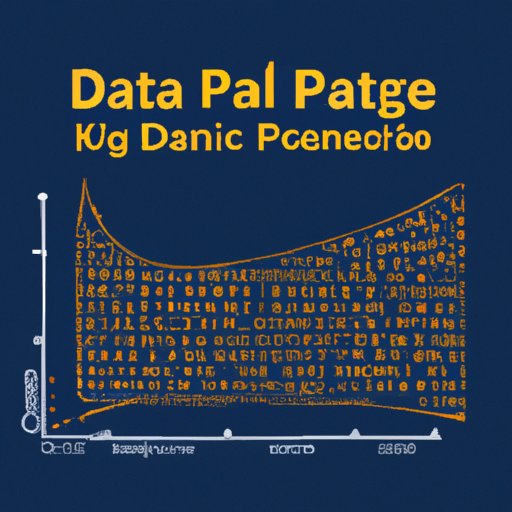Introduction
Data science is a field of study that combines scientific methods, processes, algorithms, and systems to extract knowledge and insights from structured and unstructured data. Python is an increasingly popular language for data science due to its powerful libraries and packages, ease of use, and scalability. This article will explore the benefits of using Python for data science and provide an overview of commonly used Python libraries.
Exploring the Power of Python for Data Science
Data science projects can range from simple analyses to complex models. Python provides a wide range of tools and libraries to support the development of these projects. The flexibility and scalability of Python make it an ideal language for data science projects. Additionally, Python’s readability and ease of use make it accessible for developers of all levels of experience.
Python has become one of the most popular languages for data science due to its many advantages. According to a survey by Kaggle, Python is the most commonly used language for data science projects. Over 80% of respondents reported using Python for their data science projects. Additionally, over 60% of respondents said they chose Python because of its ease of use.

Leveraging Python Libraries for Data Science Projects
Python has a large number of libraries and packages designed specifically for data science projects. These libraries include NumPy, SciPy, Pandas, Scikit-learn, Matplotlib, and Seaborn. Each library has its own set of features and functions that make it useful for different types of data science projects.
NumPy is a library for scientific computing with Python. It provides tools for manipulating and analyzing large data sets. SciPy is a library that provides tools for numerical analysis, optimization, and statistics. Pandas is a library that provides high-level data structures and analysis tools. Scikit-learn is a library for machine learning algorithms. Matplotlib is a library for creating static, animated, and interactive visualizations. Finally, Seaborn is a library for creating attractive and informative statistical graphics.
A Guide to Working with Big Data Using Python
Big data is a term used to describe large amounts of data that are difficult to process or analyze using traditional data processing techniques. Python is a powerful tool for working with big data due to its scalability and wide range of libraries and packages. However, there are some challenges associated with working with big data using Python. For example, the memory requirements for large datasets can be very high. Additionally, the time required to process large datasets can be quite long.
There are several tips that can help developers work more effectively with big data using Python. First, developers should use Python libraries such as NumPy and Pandas to work with large datasets. Second, developers should consider using distributed computing frameworks such as Apache Spark and Hadoop for working with large datasets. Third, developers should take advantage of cloud computing services to store and manage large datasets. Finally, developers should consider using parallel processing techniques to speed up data processing.

Data Visualization with Python: Best Practices and Examples
Data visualization is the process of creating visual representations of data. Python is an excellent tool for data visualization due to its wide range of libraries and packages. There are several best practices that developers should follow when creating data visualizations with Python. First, developers should choose the right chart type for their data. Second, developers should use colors carefully to enhance the readability of their visualizations. Third, developers should pay attention to the layout of their visualizations. Finally, developers should ensure their visualizations are accurate and easy to interpret.
Examples of data visualizations created with Python include line graphs, bar charts, scatter plots, and histograms. Line graphs are used to show trends over time. Bar charts are used to compare values between different categories. Scatter plots are used to show relationships between two variables. Histograms are used to visualize the distribution of a dataset.
An Introduction to Machine Learning in Python
Machine learning is a subset of artificial intelligence that involves building models to make predictions from data. Python is a popular language for machine learning due to its wide range of libraries and packages. Python libraries such as Scikit-learn, TensorFlow, and Keras make it easier to develop machine learning models. Additionally, Python provides tools for data preprocessing and feature engineering.
Getting started with machine learning in Python requires a basic understanding of the fundamentals of machine learning. Developers should understand the different types of machine learning algorithms, the concepts of supervised and unsupervised learning, and the basics of model evaluation. Additionally, developers should have experience working with Python and its libraries.

Applying Predictive Analytics with Python
Predictive analytics is a branch of data science that uses data to make predictions about future events. Python is an excellent tool for predictive analytics due to its wide range of libraries and packages. Popular Python libraries for predictive analytics include StatsModels, scikit-learn, and XGBoost. These libraries provide a range of tools for building predictive models and making predictions.
Developers can use Python to build a variety of predictive models, including linear regression, logistic regression, decision trees, random forests, and neural networks. Examples of predictive analytics applications built with Python include credit scoring, customer segmentation, fraud detection, and sales forecasting.
Conclusion
Data science is a rapidly growing field, and Python is quickly becoming one of the most popular languages for data science projects. Python’s scalability, readability, and wide range of libraries and packages make it an ideal language for data science. This article explored the benefits of using Python for data science, provided an overview of commonly used Python libraries, and offered tips for working with big data, data visualization, machine learning, and predictive analytics.
(Note: Is this article not meeting your expectations? Do you have knowledge or insights to share? Unlock new opportunities and expand your reach by joining our authors team. Click Registration to join us and share your expertise with our readers.)
